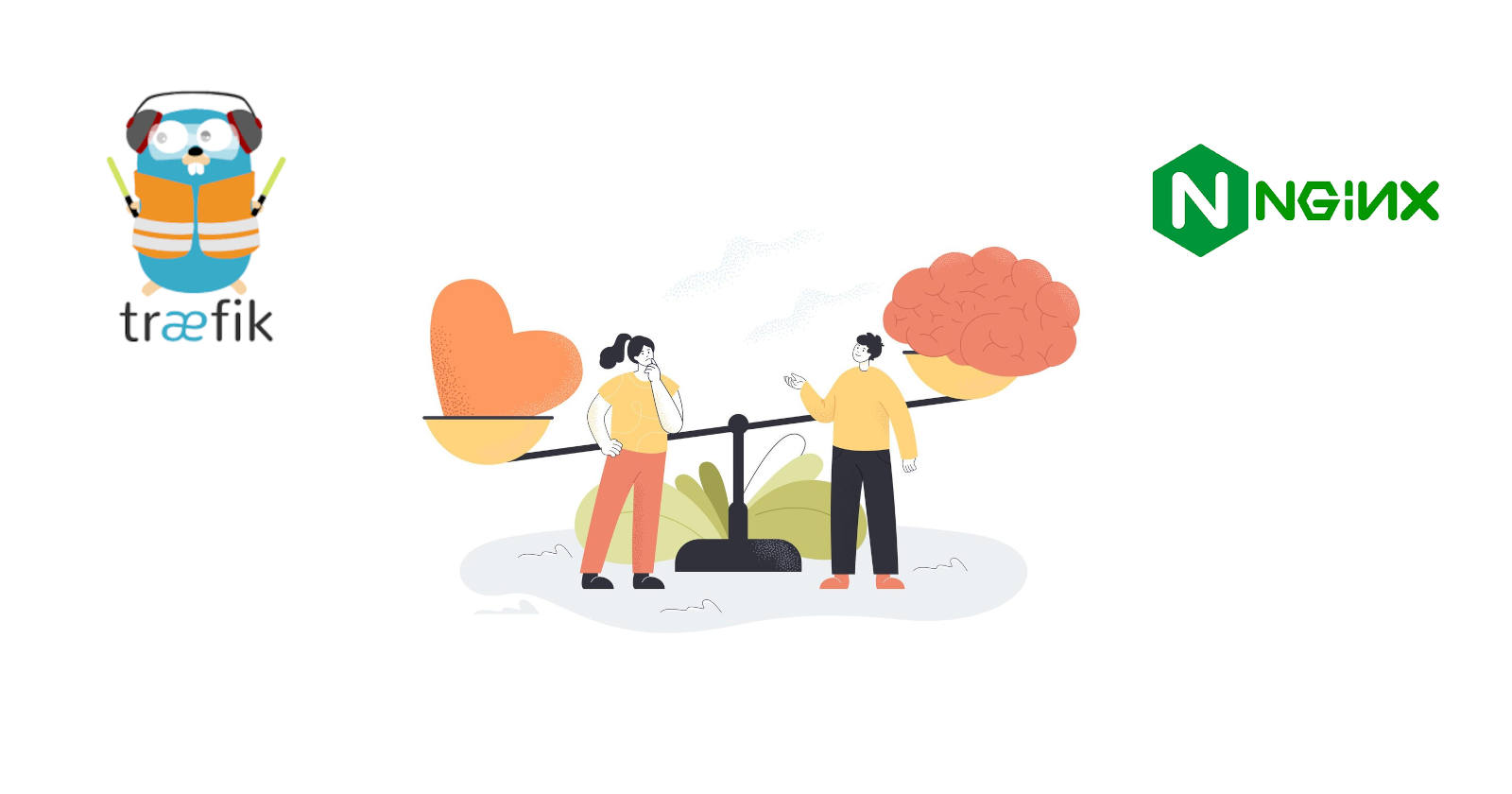Comparing Traefik vs Nginx
 Nikhil Akki
Nikhil Akki
Introduction
Traefik and Nginx are both popular reverse proxy servers used in modern web infrastructure. Traefik is designed specifically for microservices architectures and containerized environments, while Nginx has a broader range of uses including traditional web serving, load balancing, and caching.
Simpler Explanation
Imagine Traefik as a specialized traffic cop for microservices, guiding requests to the right service based on rules. Nginx, on the other hand, is like a versatile traffic controller managing various types of traffic on a busy intersection.
Similarities
| Aspect | Explanation |
| Reverse Proxy | Both Traefik and Nginx can act as reverse proxies, forwarding requests from clients to backend servers. |
| Load Balancing | They both support load balancing, distributing incoming requests among multiple servers for efficiency. |
| TLS Termination | Both can handle SSL/TLS termination, decrypting incoming encrypted traffic before forwarding it internally. |
| Web Server | Nginx is well-known as a web server, while Traefik can also serve static content but is more tailored for microservices. |
| Configuration | Both have flexible configuration options, allowing users to customize settings for their specific needs. |
Here's a table highlighting the differences between Traefik and Nginx:
| Aspect | Traefik | Nginx |
| Primary Focus | Microservices and containerized environments | General-purpose web serving, load balancing, and caching |
| Configuration | YAML-based configuration suited for dynamic environments and container orchestration platforms | Configuration files in Nginx's own syntax, more traditional setup for web server configurations |
| SSL/TLS Handling | Automatic SSL certificate management for containerized applications | Requires manual configuration for SSL certificates, more control over SSL/TLS settings |
| Routing Flexibility | Built-in support for dynamic routing based on labels, tags, or service metadata | Powerful routing capabilities but requires more manual configuration for dynamic routing |
| Community Support | Strong community focus on microservices and cloud-native technologies | Extensive community support across various web server and proxy use cases |
| Learning Curve | Easier learning curve for developers familiar with YAML and container orchestration concepts | Steeper learning curve for complex configurations, especially for beginners |
| Deployment Scenarios | Ideal for modern, cloud-native applications and microservices architectures | Suitable for a wide range of applications, including static websites, APIs, and reverse proxy |
| Monitoring and Metrics | Provides built-in metrics and monitoring capabilities for containerized environments | Requires additional plugins or configurations for advanced monitoring and metrics |
| Licensing | Open-source with a permissive license (MIT) | Open-source with a BSD-like license, also available as a commercial product (NGINX Plus) |
Use Cases
Traefik:
Routing requests to microservices based on path or domain.
Automatic SSL certificate management for containerized applications.
Load balancing traffic across multiple instances of a service.
Integrating with container orchestration platforms like Kubernetes.
Serving dynamic configurations based on real-time metrics.
Nginx:
Hosting static websites and serving as a traditional web server.
Load balancing HTTP, HTTPS, TCP, and UDP traffic.
Caching frequently accessed content to improve performance.
Acting as a reverse proxy for handling requests to backend servers.
Securing applications with SSL/TLS encryption and authentication.
Conclusion
In conclusion, Traefik excels in microservices and container environments, offering automatic configuration and dynamic routing, while Nginx is a versatile solution suitable for a wide range of use cases including web serving, load balancing, and caching. The choice between them depends on the specific needs and architecture of the application or infrastructure being deployed.
Subscribe to my newsletter
Read articles from Nikhil Akki directly inside your inbox. Subscribe to the newsletter, and don't miss out.
Written by

Nikhil Akki
Nikhil Akki
I am a Full Stack Solution Architect at Deloitte LLP. I help build production grade web applications on major public clouds - AWS, GCP and Azure.